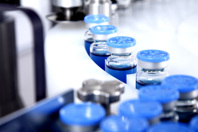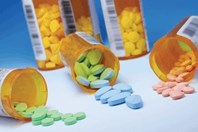PACKAGE STERILIZATION WHITE PAPERS, CASE STUDIES, & APPLICATION NOTES
-
Converting Large Ethylene Oxide Contract Sterilizer Chambers To Small In-House Chambers
This paper addresses cycle development/validation considerations when converting from EO sterilization at a contract sterilizer in a large chamber that holds one or more pallets of final pack product, to sterilization in-house, in a smaller chamber with less than one pallet in capacity in primary packaging.
-
Why Production Forecast Affects Sterilization Method
To choose a sterilization method, device manufacturers typically look at what materials the device is made of and which sterilization method the design can withstand. This paper discusses the effect that a production forecast has on both up-front and long-term costs of EO sterilization and Gamma sterilization.
-
Sterilization Of 3D Printed Medical Devices
Fused Deposition Modeling™ (FDM® ) can be used to produce an array of medical devices; however, for such devices to be practical, they must be manufactured using sterilizable materials. By David Espalin, Francisco Medina, Mireya Perez, and Ryan Wicker, The University of Texas at El Paso; and Terry Hoppe and Rob Winker, Stratasys
-
Sterilization Methods And Their Impact On Medical Devices Containing Electronics
Although there is considerable literature about sterilization methods and equipment, there is very little written about the impact of sterilization on electronics. This article compares popular sterilization methods and discusses their suitability for objects containing electronics.
-
Designing Successful Cleaning and Sterilization Studies for Reprocessed Devices
This white paper from WuXi AppTec describes a list of expert tips to consider when designing validation testing programs in order to successfully demonstrate the efficacy of procedures being used. Some tips include reviewing/updating reprocessing instructions, using the “most challenging conditions,” and including replicates in your studies.
-
Effects Of Sterilization Methods On Key Properties Of Specialty Optical Fibers Used In Medical Devices
Optical fibers with different types of polymer coatings were exposed to three sterilization conditions: multiple autoclaving, treatment with ethylene oxide and treatment with gamma rays. Effects of different sterilization techniques on key optical and mechanical properties of the fibers are reported. The primary attention is given to behavior of the coatings in harsh sterilization environments. The following four coating/buffer types were investigated: (i) dual acrylate, (ii) polyimide, (iii) silicone/PEEK and (iv) fluoroacrylate hard cladding/ETFE.
-
The Benefits Of Package Integrity Testing
In a world full of hungry microorganisms, it is critical that medical devices, designed to heal, do not inadvertently do the opposite by infecting the patient. To prevent infection, a device’s packaging or “sterile barrier system” must maintain sterility over the product’s entire shelf-life. By Ed Emerson
PACKAGE STERILIZATION NEWS
-
When designing or considering the manufacturing process for a medical device, there’s an element that often gets left until the last minute; packaging. The right packaging used can reduce costs, potentially optimize the sterilization processes, and aid in the manufacturing process.
-
In order to achieve a successful supply chain management, packaging systems have to be connected with aspects of marketing, logistics, productions, and the environment.
-
To ensure the package is error free, progressive companies now use automated proofreading solutions throughout the design and printing of the package and label.
-
For pharmaceutical companies, a barcode helps to assure the origins of the drugs, which in turn helps in minimizing the possibility of a genuine drugs being considered sub-standard or counterfeit.
-
Many times, biologics don’t have viable options for sterilization due to their very delicate and complex properties. Peracetic Acid is a sterilization option that uses peracetic acid vapor (PAA) at room temperature so that delicate materials, such as biological implants, can be sterilized without damage.
-
In order to better understand the different types of sterilization for medical device components we refer to the Center for Disease Control and Prevention for a definition; "sterilization is the use of a physical or chemical process that destroys all microbial life including the bacterial endospores that are so highly resistant". By Rena Ivory, Crescent Industries, Inc.




